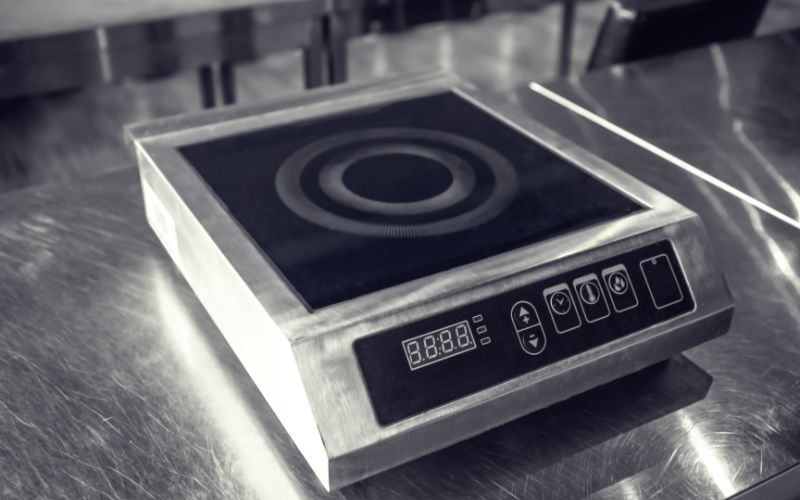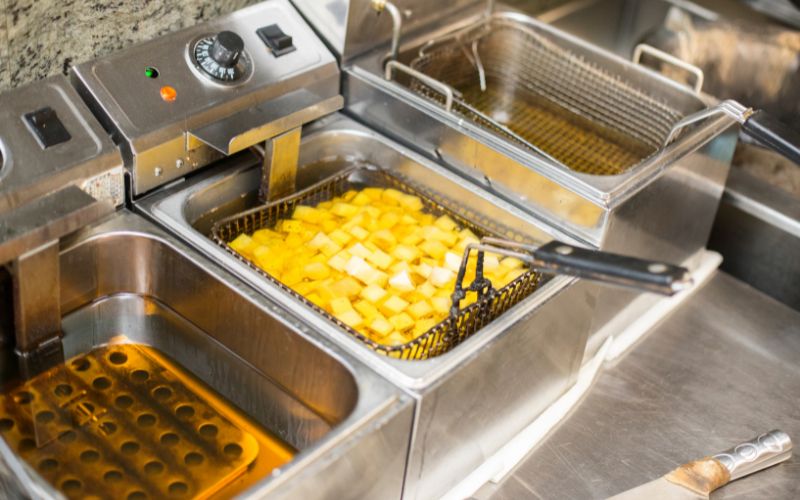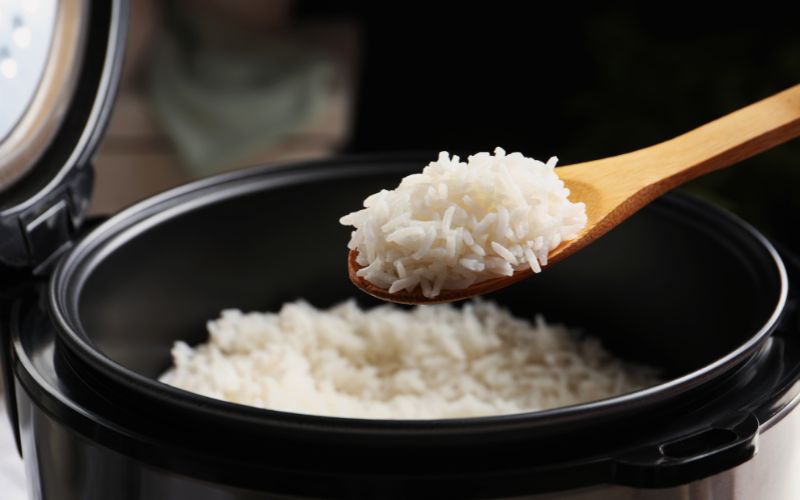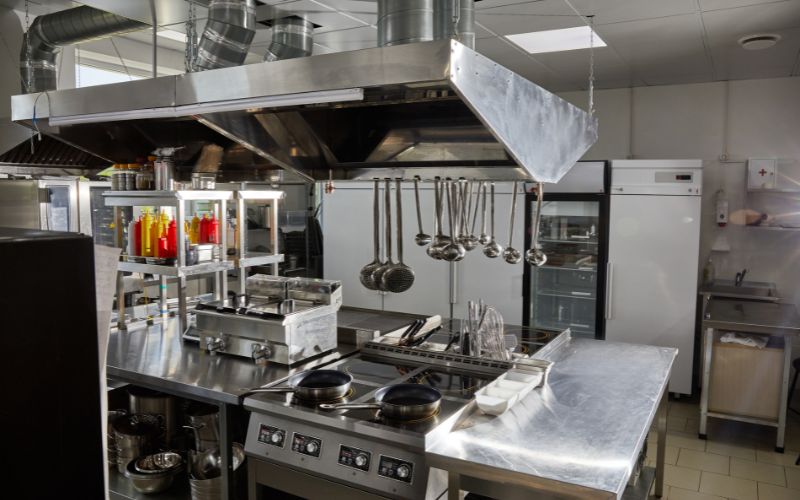6 Tips for Keeping Your Stainless Steel Bench Looking Good
Stainless steel is known for its durability and resistance to corrosion, making it a popular choice for commercial and industrial settings. However, even the highest-quality stainless steel benches can lose their shine and aesthetic appeal over time if not properly maintained. Keeping your stainless steel bench looking good requires a combination of preventive measures and regular cleaning routines. Fortunately, several tips and tricks can help you maintain your stainless steel bench's appearance and extend its lifespan.
This article will provide six intelligent and proven tips for keeping your stainless steel bench looking as good as new, ensuring it continues serving you for many years.
The Importance of Maintaining Stainless Steel Benches

Stainless steel benches are commonly used in commercial kitchens, hospitals, laboratories, and other facilities where catering equipment cleanliness and hygiene are paramount. Stainless steel is a durable and corrosion-resistant material that can withstand frequent cleaning and disinfection, making it a popular choice for food preparation surfaces and other high-use areas.
Maintaining stainless steel benches properly is essential to ensure they remain in good condition and function effectively. Failure to keep stainless steel benches can lead to surface damage, rust, and contamination, compromising their functionality and hygiene.
Here are some reasons why it is essential to maintain stainless steel benches:
Hygiene: Stainless steel benches are often used for food preparation and storage, making them susceptible to bacterial growth if not cleaned regularly. Proper maintenance ensures the surface is clean and bacteria-free, preventing cross-contamination and foodborne illnesses.
Durability: Stainless steel is known for its durability and corrosion resistance, but it still requires regular maintenance to remain in good condition. Proper cleaning and care can prevent surface damage, rust, and other forms of corrosion, prolonging the lifespan of the bench.
Appearance: Stainless steel benches are often highly visible and can affect the overall appearance of a facility. Maintaining a clean and well-maintained surface can enhance the area's visual appeal and create a more professional and welcoming environment.
Safety: Damaged or poorly maintained stainless steel benches can pose a safety hazard to workers or users. Sharp edges or rough surfaces can cause injuries, and rust can compromise the structural integrity of the bench.
Maintaining stainless steel benches is essential to ensure their functionality, durability, hygiene, and safety. Regular cleaning, disinfection, and care can prevent surface damage, rust, and bacterial growth, prolonging the lifespan of the bench and creating a safe and welcoming environment.
Step-By-Step Instructions for Cleaning Your Bench

Tip 1: Use the Right Cleaning Supplies
Using the right cleaning supplies is crucial when maintaining stainless steel benches. Here are some tips to keep in mind:
Use a mild detergent: Avoid using harsh or abrasive cleaners that can damage the surface of the stainless steel bench. Instead, use a mild detergent and warm water to clean the surface.
Avoid bleach and chlorine: Bleach and chlorine can cause discolouration and damage to the stainless steel surface, so it's best to avoid them altogether.
Use microfiber cloths: Microfiber cloths are gentle on the surface of stainless steel and can effectively remove dirt and grime without leaving streaks or scratches.
Rinse thoroughly: Rinse the stainless steel bench thoroughly with clean water to remove any soap residue.
Use stainless steel polish: For extra shine and protection, use a stainless steel polish explicitly designed for stainless steel surfaces.
Tip 2: Avoid Abrasive Materials
Avoiding abrasive materials is essential when maintaining stainless steel benches. Abrasive materials can scratch the surface of the stainless steel, causing damage and making it more susceptible to corrosion. Here are some tips to avoid using abrasive materials:
Avoid steel wool: Steel wool is abrasive and can scratch the surface of stainless steel. Instead, use a soft sponge or cloth to clean the surface.
Avoid scouring powders: Scouring powders can also scratch the surface of the stainless steel, so it's best to avoid using them altogether.
Use plastic or nylon brushes: If you need to scrub the surface of the stainless steel bench, use a gentle plastic or nylon brush on the surface.
Avoid hard water: Hard water can leave mineral deposits on the surface of the stainless steel, making it more susceptible to corrosion. If you live in an area with hard water, consider using a water softener to minimize mineral buildup.
Tip 3: Clean Spills and Stains Immediately
Cleaning spills and stains immediately are essential to prevent them from setting and becoming more difficult to remove later on. Here are some tips for cleaning spills and stains:
Act quickly: The longer you wait to clean up a spill or stain, the harder it will be to remove. So act fast and tackle the stain before it sets.
Blot, don't rub: Always blot the area with a clean cloth or paper towel when cleaning spills and stains. Don't rub the stain, as this can cause it to spread and become more difficult to remove.
Use the right cleaning solution: Different spills and stains require different cleaning solutions. For example, vinegar and baking soda can remove stains from carpets and upholstery, while hydrogen peroxide and dish soap effectively remove food stains from clothing.
Test the solution first: Before using any cleaning solution on a stain, test it on an inconspicuous area to ensure it doesn't cause any damage or discolouration.
Follow instructions carefully: If you're using a commercial cleaning product, always read and follow the instructions carefully.
Tip 4: Dry Your Bench Thoroughly
Drying your bench is essential in maintaining cleanliness and preventing mould and bacteria growth. Here are some tips for drying your bench effectively:
Use a clean, dry cloth: Use a clean, dry cloth to wipe down your bench after cleaning. Avoid using a damp cloth or sponge, which can leave moisture behind and promote mould and bacteria growth.
Use a fan or open windows: Use a fan or open windows to help dry your bench more quickly. Increased airflow will help to evaporate any moisture and prevent it from lingering on the surface.
Leave it to air dry: If you can't access a fan or windows, leave your bench to air dry naturally. Avoid using it until it is scorched, as sitting or placing objects on a damp surface can trap moisture and promote mould and bacteria growth.
Use a microfiber cloth: A microfiber cloth is more absorbent than regular cloth and can help to dry your bench more thoroughly. Use it to wipe down your bench after cleaning and again to ensure that it is scorched.
Tip 5: Use Protective Coatings
Protective coatings are a great way to keep your bench clean and prevent damage to the surface. Here are some types of protective coatings that you can use:
Sealants: Sealants can be applied to various surfaces, including wood, concrete, and metal. They create a protective barrier that prevents liquids and dirt from penetrating the surface and staining or damaging it.
Wax: Wax can be applied to wood surfaces to protect them from scratches and stains. It creates a protective layer that can be buffed to a high shine, giving the surface a polished appearance.
Clear coat: They can be applied to metal and wood surfaces to protect them from rust, corrosion, and weathering. They create a tough, durable finish that can withstand exposure to the elements.
Epoxy: Epoxy coatings can be used on concrete surfaces to protect them from stains and damage. They create a tough, durable finish that can withstand heavy use and chemical exposure.
Nanocoatings: Nanocoatings are a relatively new type of protective coating that uses nanotechnology to create a super-thin, transparent layer on the surface. They are highly water-repellent, making them ideal for glass and ceramic surfaces.
Tip 6: Regularly Inspect Your Bench
Regularly inspecting your bench is essential to identify any issues or damage before they become more severe and costly. Here are some tips for inspecting your bench:
Check for cracks or chips: Look for any damages or chips in the surface of your bench. These can be signs of wear and tear and provide a breeding ground for bacteria and mould.
Look for stains or discolouration: Check for any stains or discolouration on your bench. These can be signs of spills or chemical exposure and may require unique cleaning methods to remove.
Check for loose or damaged parts: Check for any loose or damaged parts on your bench, such as loose screws or broken legs. These can be safety hazards and should be repaired immediately.
Inspect the underside: Inspect the bottom of your bench, as this can reveal any hidden damage or wear and tear.
Check for pests: Inspect your bench for signs of problems, such as termites or ants. These can cause severe damage to wooden benches and should be addressed immediately.
Conclusion:
In conclusion, maintaining the cleanliness and appearance of your stainless steel bench is crucial to ensure it lasts for years to come. Following the six tips discussed, you can keep your bench looking good and in top condition. In addition, remember to immediately clean up spills and stains, dry your bench thoroughly, use protective coatings, and regularly inspect your bench for any issues or damage.
If you plan to buy a kitchen bench, you can rely on Leading Catering Equipment to provide high-quality, durable products that meet your needs. From stainless steel benches to sinks and shelving, they offer a wide range of products to suit your requirements. So, visit their website today and choose the perfect bench for your kitchen. For added convenience in your kitchen, consider incorporating a bain marie into your setup and browse Leading Catering Equipment's range of top-quality products to find the perfect one for your needs.





